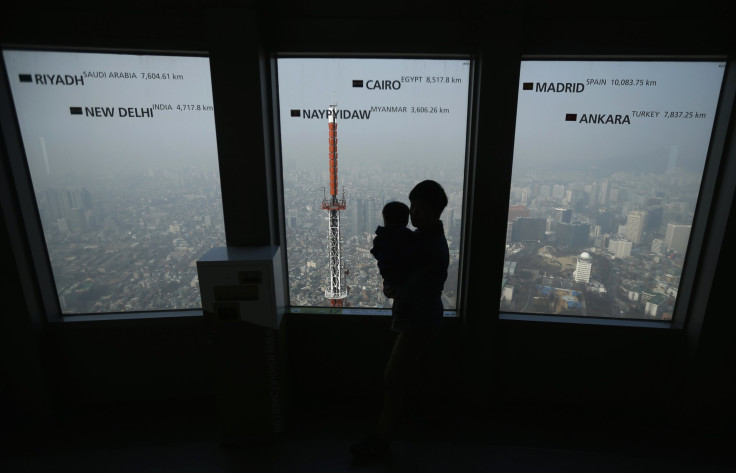Smog In Korea: Coal Power Plants, Not China, Are Major Culprits, Says Greenpeace

Environmental group Greenpeace said Wednesday that much of the smog in South Korea came from the country’s coal power plants and that it was not mostly blown over from China. "Despite what is widely reported through the Korean media, 50 to 70 percent of particle-laden smog, which is also known as PM2.5, is generated within the country," Greenpeace said at a news conference in Seoul, according to Korea Times. The group was in South Korea for four days promoting its campaign against the country’s expansion of coal power plants and the high PM2.5 levels there.
Greenpeace claimed that the South Korean government had an inadequate understanding of PM2.5 and thus did not have policies in place to tackle the country’s air pollution problem. "Yet the Korean government irresponsibly passes the blame on to China without having any strategies to tackle the problem itself," said Greenpeace, according to Korea Times.
PM2.5 is an ultrafine dust that is smaller than 2.5 micrometers. These pollutants have been known to cause health problems such as heart disease, strokes, and lung cancer.
While South Korea’s coal power plants comprised the bulk of the country’s air pollution problem, Greenpeace said that China still contributed about 30 to 50 percent to the smog, according to its study conducted jointly with Harvard University. However, unlike South Korea, China has been making efforts to tackle its air pollution and had planned to limit growth in coal energy use by 2021, the group said.
South Korea, on the other hand, had pledged to build a dozen more coal power plants by 2021 as part of its 14-year energy plan launched in 2013, according to South Korean news agency Yonhap News. The agency reported that South Korea currently has more than 50 coal plants. "[South] Korea stands out as the developed country with the biggest plans for new coal," said Lauri Myllyvirta, a Greenpeace official, according to Korea Times, adding that investment conditions for renewable energy are relatively poor.
The particulates generated by coal plants in South Korea kill as many as 1,600 people each year, according to the study. Daniel Jacob, an atmospheric chemistry professor involved in the study, said that premature deaths could reach up to 2,800 per year by 2021 if the pollution is not curbed, according to Yonhap. The environmental group has launched a petition to get the South Korean government to rely less on coal power and look toward renewable sources instead.
"South Korea's coal policy is running counter to that of the rest of the world," said Son Min-woo, a Greenpeace activist, according to Yonhap, adding that "It's not too late for South Korea to explore renewable energy as an alternative."
© Copyright IBTimes 2024. All rights reserved.






















